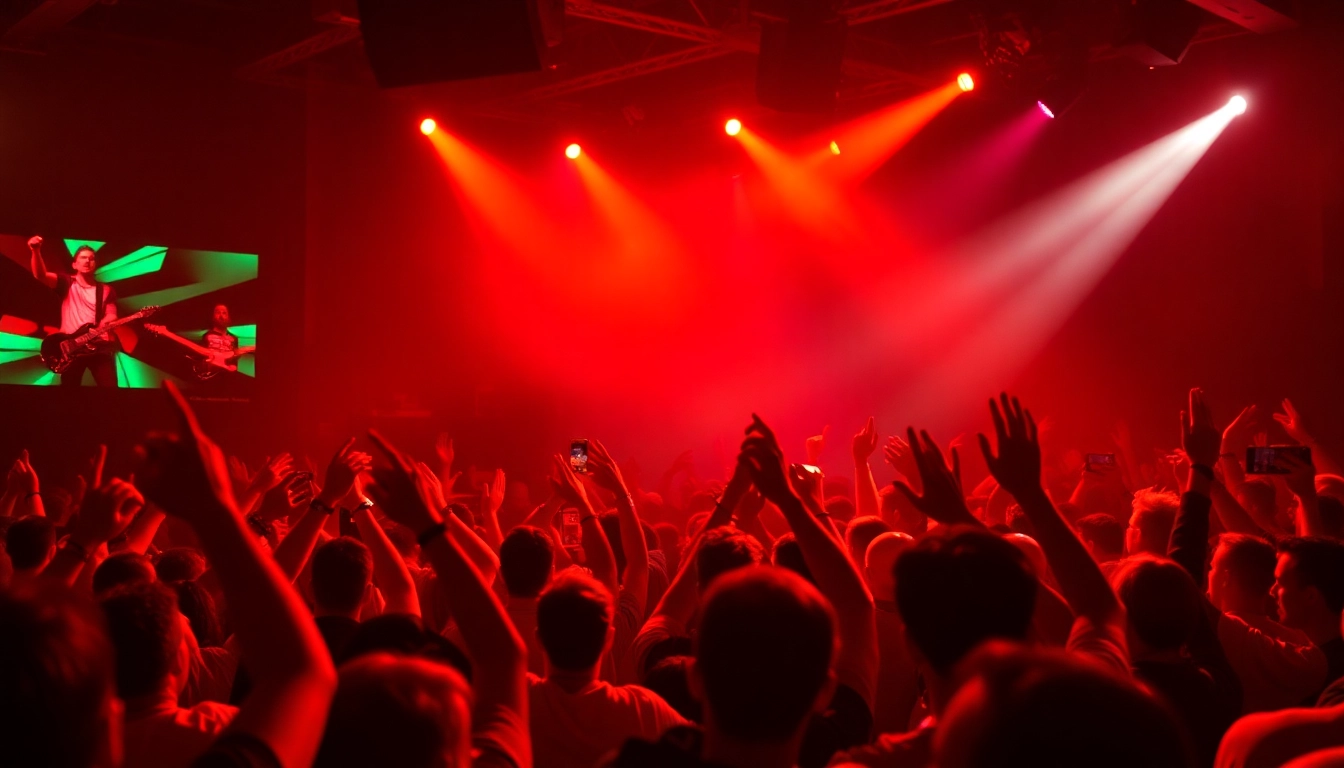Understanding Live Music Fans
The phenomenon of live music transcends mere performances; it creates profound connections between artists and audiences. For anyone looking to engage meaningfully with live music fans, understanding the demographic landscape is critical. These fans not only exhibit diverse preferences but also demonstrate unique behavioral tendencies, influencing how events are organized and marketed.
Demographics and Preferences
Live music fans encompass a wide range of demographics, notably differing in age, gender, and socioeconomic background. Research indicates that younger audiences, typically aged 18-34, make up a significant portion of the concert-going public. These fans often gravitate towards genres like pop, rock, and electronic dance music (EDM), which frequently dominate festival line-ups.
In contrast, older demographics (35 and above) tend to prefer genres like classic rock, jazz, and country. The preferences among different age groups can inform marketing strategies, enabling promoters to tailor their offerings. For example, data shows that younger audiences are more inclined towards vibrant, experiential environments while older fans appreciate more traditional concert settings.
Behavioral Insights of Live Music Fans
Understanding the typical behaviors of live music fans can provide valuable insights into their motivations and engagement strategies. Surveys and studies reflect that live music fans prioritize social interaction, often attending events with friends or family. It’s also observed that a substantial number of fans have a propensity to share their experiences on social media, amplifying their engagement.
Additionally, loyalty plays a crucial role in the behavior of live music fans. Fans often develop a deep connection with specific artists, attending multiple shows over time. This loyalty can be nurtured through personalized communication and exclusive offerings, enhancing lifetime fan value and engagement.
Key Drivers of Engagement
Several key factors drive the engagement of live music fans. The authenticity of the experience is paramount; fans are increasingly drawn to venues that host local talent alongside well-known artists, as this creates a sense of community. Moreover, the overall atmosphere of the event—spanning from the sound quality to the decor—significantly influences fan satisfaction.
Another driver is the advent of technology, with fans seeking high-quality audio-visual experiences. Innovations such as augmented reality (AR) and virtual reality (VR) are gaining traction, as they allow fans to enjoy concerts in new, immersive ways, even from the comfort of their homes. Consequently, integrating these technologies can yield substantial benefits for artists and venues alike.
Building a Community for Live Music Fans
Creating a robust community around live music is essential for engaging fans beyond just the concerts. A vibrant fan community nurtures loyalty, enhances the fan experience, and fosters a sense of belonging. Here are strategies to build such a community effectively.
Creating Meaningful Connections
At the heart of any lively music community is the propensity for connection. Events that facilitate interpersonal interactions—such as meet-and-greet sessions with artists, fan clubs, and special events—can significantly enrich the fan experience. Additionally, incorporating storytelling into events can help fans connect over shared memories or aspirations tied to the music they love.
Furthermore, utilizing localized engagement strategies such as organizing fan-driven events or contests can provide platforms for fans to interact meaningfully. These strategies promote not only artist loyalty but also a network among fans themselves, enhancing the overall community feeling.
Utilizing Social Media Platforms
Social media has revolutionized how communities form and interact. For live music fans, platforms like Instagram, Twitter, and TikTok serve as vital tools for engagement. Artists and event organizers must capitalize on these platforms, sharing behind-the-scenes content, interacting with fans, and promoting upcoming events.
Creating dedicated hashtags can also facilitate conversations among fans, allowing them to share their concert experiences and connect over shared interests. Regularly engaging with fans through polls, live streams, and Q&A sessions can foster a vibrant online community, ensuring that fans feel heard and valued.
Offline Engagement Opportunities
While online engagement is invaluable, offline opportunities should not be overlooked. Organizing local events, pop-up concerts, and fan meet-ups can provide fans with the chance to connect in person. These experiences often cement deeper connections than online interactions can offer.
Additionally, partnerships with local businesses to offer exclusive promotions or merchandise can enhance each fan’s overall experience, contributing to a vibrant and supportive local music culture.
Improving Experiences for Live Music Fans
As the music landscape evolves, so must the strategies for enhancing fan experiences. Understanding what fans desire and how they want engagement is fundamental to providing unforgettable live music experiences.
Innovative Concert Features
With the proliferation of technology, introducing innovative features at concerts can greatly enhance the fan experience. This includes interactive elements such as real-time polls during performances, allowing fans to decide on the next song, or enabling VR setups for an interactive concert experience.
Moreover, health and safety features such as contactless payment options, crowd management technology, and sanitization stations not only ensure safety but can also enhance fans’ comfort and overall enjoyment of the event.
Incorporating Fan Feedback
Listening to the fan base should be an ongoing commitment. Regularly seeking feedback through structured surveys, social media polls, or direct communication can provide clear insights into what aspects resonate with fans and what areas require improvement. This feedback loop enables organizers to adapt and evolve with fan expectations.
Incorporating fan feedback into planning stages for future events creates a sense of shared ownership and significantly enhances fan loyalty and satisfaction.
Enhancing Accessibility at Events
Making live music events accessible to everyone is paramount. This includes enhancing physical accessibility for individuals with disabilities, offering sign-language interpreters, and providing accessible seating areas. Additionally, considering sensory-friendly experiences for neurodiverse individuals can create an inclusive atmosphere that welcomes all fans.
Organizers should also focus on affordability, as ticket prices can be a barrier for many potential attendees. By providing tiered ticket pricing, group discounts, and special promotions, more fans can participate, enhancing the crowd’s diversity and engagement.
Marketing Strategies for Live Music Fans
Effective marketing is central to attracting and retaining live music fans. Here are strategic approaches that can enhance visibility and deepen connections with these audiences.
Targeted Promotion Techniques
A successful marketing strategy begins with understanding the target demographic. Utilizing data analytics to segment audiences based on preferences, location, and past engagement can enable more focused marketing efforts. For example, personalized email campaigns that include artist recommendations or tailored offers based on prior concert attendance can significantly increase ticket sales.
Additionally, utilizing geotargeting strategies through social media advertising helps ensure that promotions reach fans in specific regions, maximizing attendance for local events.
Leveraging Influencers in the Music Scene
Influencer partnerships can significantly impact the reach and effectiveness of marketing efforts. Collaborating with micro-influencers—individuals with a dedicated and engaged follower base—within the music community can yield authentic promotion, creating a ripple effect that enhances event visibility.
Influencers can engage their followers with personalized experiences, sharing live content and encouraging attendance, thereby driving interest and sales. Additionally, their endorsements can lend credibility and resonance to promotional efforts, enhancing community trust.
Measuring Marketing Effectiveness
To ascertain the success of marketing strategies, establishing clear metrics is essential. Key performance indicators (KPIs) such as ticket sales, social media engagement rates, and audience growth can provide insights into what works and what needs adjustments. Regular analysis of these metrics helps refine marketing strategies, ensuring they align with fan preferences and behaviors.
Utilizing surveys post-event to gauge fan satisfaction and gathering feedback on marketing efforts can further enhance future campaigns, creating a cycle of continuous improvement and growth.
The Future of Live Music Fans Engagement
The live music scene is in a state of constant evolution, driven by changing fan expectations, technological advances, and societal trends. Keeping an eye on future developments will be essential for promoters and artists aiming to thrive.
Trends Shaping the Live Music Landscape
Several transformative trends are shaping the future of live music engagement. One significant development is the rise of hybrid events, blending in-person attendance with virtual participation. This model not only caters to audiences that prefer experiencing concerts from home but also expands geographical reach beyond local fans.
Additionally, sustainability has emerged as a key concern for modern audiences. Live music events that prioritize environmental responsibility through eco-friendly practices resonate more with fans seeking alignment with their values. This includes utilizing sustainable materials, reducing waste, and offering carbon offset programs.
Technology’s Role in Fan Experiences
Technology continues to play a vital role in reshaping how fans engage with live music. Innovations in ticketing technologies, such as blockchain for secure transactions and NFTs for exclusive experiences, are on the rise. These advancements can help prevent fraud and create unique offerings that enhance the fan experience.
Moreover, the incorporation of immersive technologies—like live-streaming concerts in high-definition or integrating AR elements—provides fans with unique entertainment experiences that were unimaginable just a few years ago. Understanding and leveraging these technological advancements will be crucial for sustaining engagement and enhancing satisfaction.
Adapting to Changing Fan Expectations
As cultural and social trends evolve, so too do fan expectations. Today’s live music fans prioritize personal experiences and direct relationships with artists. Ensuring opportunities for engagement, such as fan clubs and direct interactions, can help address these expectations.
In conclusion, to effectively engage with live music fans, the comprehensive understanding of their demographics, preferences, and behaviors is paramount. Building meaningful relationships, leveraging technology, continuously improving experiences, and applying insightful marketing strategies are essential steps. Ultimately, as the future unfolds, adaptability and innovation will dictate success in creating authentic connections with the vibrant community of live music enthusiasts.



